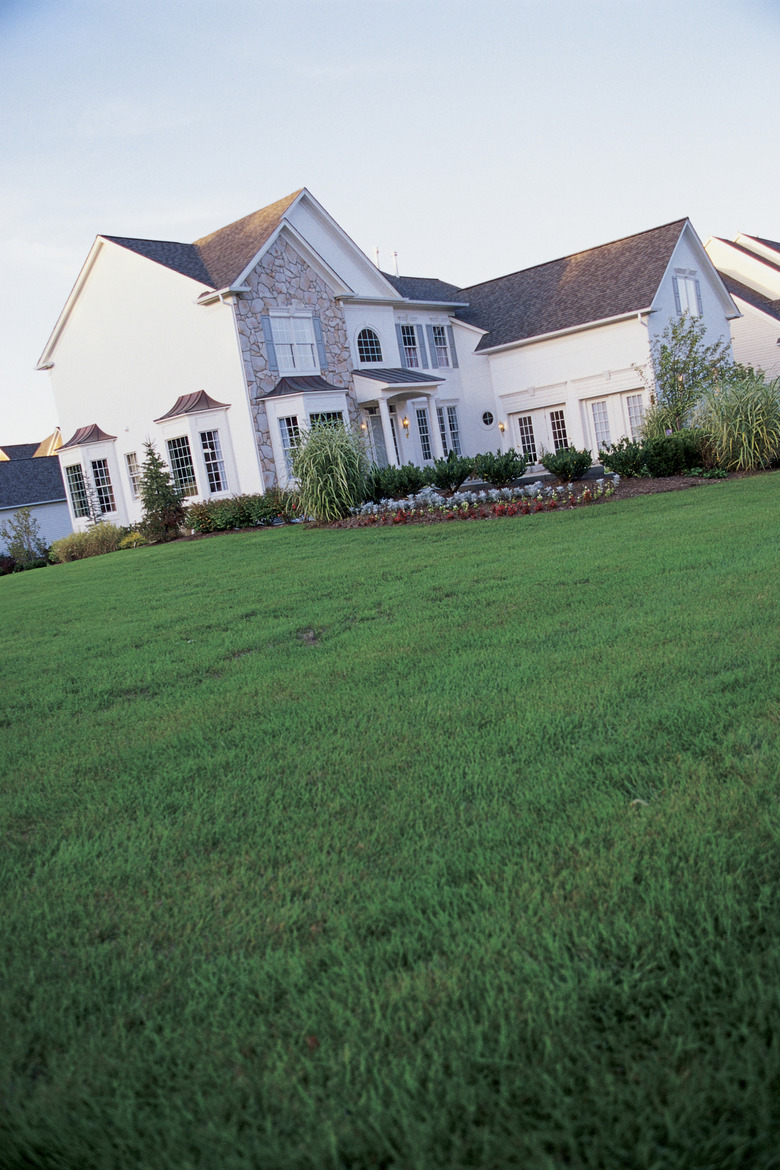How Often Do I Put Milorganite On My Lawn?
Milorganite, the brand name for a nitrogen fertilizer derived from biosolids, is widely available at most home and garden centers. The product is suitable for use on a variety of turfgrasses, both warm- and cool-season, as well as other landscaped areas. Application rates and frequency varies according to grass type and local conditions.
What Is Milorganite?
Milorganite is produced from human sewage sludge remnants known as biosolids. Effluent from the Milwaukee Metropolitan Sewerage District is treated and solidified before being aerated, dried and processed by microorganisms. The product is heated to high temperatures for sterilization, then molded into small pellets and stored in bulk for resale. It's also packaged in smaller quantities for use as residential fertilizer. The end product is a 5-2-0 blend, slow-release, water-insoluble nitrogen fertilizer that's ideal for use in various lawn and garden settings.
Cool-Season Lawns
To fertilize cool-season lawns, apply Milorganite four times a year, ideally on Memorial Day, Independence Day, Labor Day and Halloween. Cool-season grasses that benefit from this fertilization schedule include Kentucky bluegrass, perennial ryegrass and fescue. Time the last application of Milorganite as late as possible in the growing season but before the first frost or snowfall. This practice, called dormant feeding, helps the lawn store nutrients for a quick greening when spring arrives.
Warm-Season Lawns
Fertilize warm-season grasses around Easter, Memorial Day, Labor Day and the beginning of October. Time the Easter application so the lawn is fertilized shortly after coming out of dormancy. The October application should coincide with annual overseeding. This fertilization schedule can be used for a variety of warm-season lawns including Bermuda, Bahia, centipede grass, St. Augustine and zoysia. These grasses don't respond well to late-season fertilizing, so application of Milorganite should be curtailed well in advance of the average date of the area's first killing frost.
Method of Application
Apply the fertilizer with a broadcast spreader at a rate of 36 lbs. per 2,500 square feet of lawn area, for both warm- and cool-season grasses. Set the spreader to dispense the fertilizer at rates specified by the spreader's manufacturer. One pound of Milorganite by weight is equal to 3 cups, if measuring fertilizer by volume rather than weight. Overlap the fertilizer coverage with each pass made with a rotary broadcast spreader and walk at a steady pace when applying.
